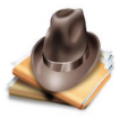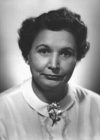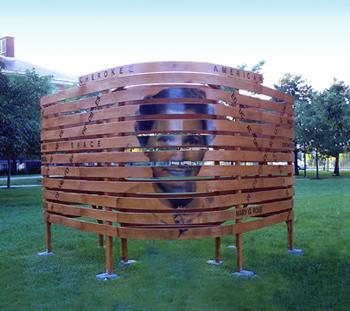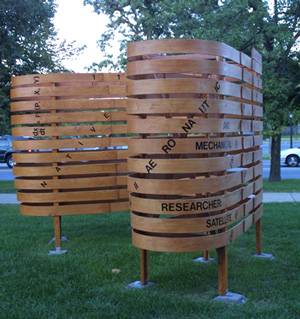Mary G. Ross, Pioneering American Indian Engineer - Lockheed Missiles and Space

Mary G. Ross

August 9, 1908 - April 29, 2008
By Mary Ouimette-Kinney
Mary G. Ross, the first Native American female engineer, graduated from Northeastern State College (now Northeastern University), in 1928, with a degree in mathematics. Her alma mater was founded by her great-great grandfather, Chief John Ross, who led the Cherokee tribes during their forced removal to the west. Ross' family emphatically supported the Cherokee tradition of emphasizing education, and equally so for both genders.
After teaching high school mathematics and science for several years, Mary served as a statistical clerk for the Bureau of Indian Affairs, and then a girl's advisor at a Native American boarding school. Earning a master's degree in mathematics from Colorado State College allowed her to join Lockheed Aircraft Corporation, in 1942. During the first two and a half years at Lockheed, Mary assisted with developing fighter planes. She applied her mathematical expertise to researching compressibility effects on the relatively large P-28 fighter plane, as it reached the sound barrier. Impressed with her performance and motivated by events of the second world war, Lockheed then offered to educate Ross as an engineer. Intense training through Lockheed and the University of California at Los Angeles followed. By 1949, a time when aeronautical engineering distinctions were yet to exist, Ross completed a mechanical engineering classification.
Lockheed Missiles and Space Company formed its roots in 1953, and Mary Ross accompanied 39 other engineers to spearhead their creative ventures. Focusing on missiles and satellites, this group of pioneers developed the Polaris ballistic missile, a series of near earth satellite systems, and a host of intermediate-range ballistic missile (IRBM) systems. Ross also researched the burgeoning field of hydrodynamics, which helped to establish criteria for the Agena rocket. When the Agena rocket became the first successfully launched vehicle, it catapulted the United States into the space age. Advancing quickly through engineering positions at Lockheed prepared Mary to develop criteria for missions to Mars and Venus. She wrote the NASA Planetary Flight Handbook Vol. 3, which projected space travels for four decades. By the late 1960's, Ross became the senior advanced systems staff engineer, which allowed her to contribute to the development of the Poseidon and Trident missiles.
After retiring from Lockheed, in 1973, Ross began another career as a staunch advocate of engineering and mathematics opportunities for women and Native-Americans. As a pioneering member of the Society of Women Engineers (SWE), she traveled to high schools and seminars to mentor college-bound students. Ross co-founded the Los Angeles section of SWE, and then served at their national government levels, for more than a decade. Her involvement with the American Indian Science and Engineering Society (AISES) and the Council of Energy Resource Tribes (CERT) resulted in expanded educational programs within each of those organizations.
In 1992, the Silicon Valley Engineering Council inducted Mary G. Ross into its Hall of Fame. Several other honors include the Woman of Distinction Award, from the San Francisco Examiner.
Recently, sculptor Lawrence Kinney chose Ross as the subject of a commission for the 2001 Pan-American Exposition, held in Buffalo, New York. Sponsored by the Women's Pavilion, of Buffalo, the centennial celebration of the 1901 Pan-American Exposition commemorates the accomplishments of minority and indigenous women of the last century. The exhibit is called, "Art Across Borders" and the title of Kinney's sculpture is "Mary G. Ross: Scientist, Engineer, Cherokee-American."
Lawrence Kinney has been a professional sculptor, for more than twenty years, and is currently the owner and sole proprietor of Sculptures and Form, a commercial and fine art firm. After designing his own steam-bending equipment, Kinney fabricated the interactive sculpture from steam-bent, white-oak wood panels. Mathematical equations, and words describing Mary Ross' accomplishments cover the sculpture's wood panels. The sculpture was unveiled September 15, 2001, on the grounds of Buffalo State College.


Front and rear views of the sculpture
Photo Credits:
Photos of sculpture by Frank M. Luterek Photography
Photo of Mary G. Ross by Lockheed Missiles and Space


She wrote the NASA Planetary Flight Handbook Vol. 3, which projected space travels for four decades. By the late 1960's, Ross became the senior advanced systems staff engineer, which allowed her to contribute to the development of the Poseidon and Trident missiles.
Got to meet Ms. Ross in '94 at an AISES conference - talk about an enthusiastic, positive example for the students to follow - WOW.
That is a beautiful sculpture and a fine tribute to a lovely woman! Good for her!
I wish that I would have had the chance to meet her 1st. I envy you the chance of meeting her.
Indeed it is Dower, and well deserved.
She certainly is a great example to follow for the young in the STEM sciences, and any looking to get into those sciences.
Oh hell, she is a great example for all people. Young, old, and in between.
This remarkable woman has certainly lived an exciting ,andfull life. Bravo, and thank youMary G. Ross !!
''Kind of puts a big dunce cap on those who constantly espouse that all Indians are just lazy ignorant drunks who do nothing but go around with their hands out to all the hard working taxpayers in America. ''
''
It sure does.
She sure was remarkable Nona. Very impressive women.